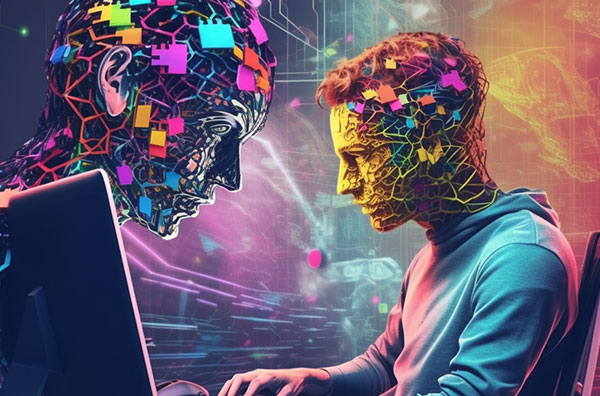
AI versus the Creative Design Industry
Posted on: 25/05/2023The integration of AI in the creative design industry has raised questions and concerns about the potential impact on human designers and the future of the profession. Here are some points to consider in the AI versus creative design industry debate:-
Automation and job displacement: AI technologies have the potential to automate certain tasks traditionally performed by designers, leading to concerns about job displacement. Routine and repetitive design tasks, such as resizing images or creating basic layouts, can be efficiently automated by AI algorithms. However, it’s important to note that AI is not a substitute for human creativity and critical thinking. Designers can adapt and focus on higher-level creative tasks that require complex problem-solving, innovation, and emotional intelligence.
- Collaboration between AI and designers: Rather than viewing AI as a threat, it can be seen as a collaborator that enhances human creativity. AI technologies can assist designers by providing intelligent tools, generating design suggestions, and streamlining the design process. Designers can leverage AI as a partner to augment their creative capabilities, explore new possibilities, and generate innovative solutions.
- Efficiency and productivity: AI can significantly improve efficiency and productivity in the creative design industry. By automating repetitive tasks and providing design assistance, AI allows designers to work more efficiently and focus on higher-value tasks. This can lead to faster project completion, reduced costs, and increased output.
- Enhanced creativity and innovation: AI can act as a catalyst for creativity and innovation in the design process. AI algorithms can analyze vast amounts of design data, identify patterns, and provide designers with insights and inspiration. By leveraging AI tools, designers can explore new design directions, experiment with unconventional ideas, and push the boundaries of their creativity.
- Ethical considerations: The use of AI in the creative design industry raises ethical considerations. Issues such as copyright infringement, plagiarism detection, and the responsible use of AI-generated content need to be addressed. Designers and industry professionals must ensure that AI is used ethically, respecting intellectual property rights and maintaining transparency in the creation and use of AI-generated designs.
- Human touch and emotional connection: While AI can assist in the design process, it may struggle to replicate the human touch and emotional connection that designers bring to their work. Design is not solely about aesthetics; it involves understanding human emotions, cultural contexts, and user experiences. Human designers are adept at incorporating these elements into their designs, creating meaningful and impactful experiences.
- Adaptation and upskilling: As AI continues to advance, designers will need to adapt and upskill to leverage the potential of these technologies. Designers can focus on developing their expertise in areas that complement AI, such as user experience design, creative strategy, and emotional intelligence. By embracing AI and acquiring the necessary skills, designers can thrive in a changing industry landscape.
In summary, while AI technologies have the potential to automate certain design tasks, the creative design industry will continue to rely on human creativity, critical thinking, and design expertise. Designers can harness the power of AI as a tool to enhance their work, foster innovation, and deliver impactful design solutions. The key lies in finding the right balance between AI and human input, leveraging the strengths of both to create truly remarkable designs.
If you would like to speak to us about how your marketing can be improved just get in touch!